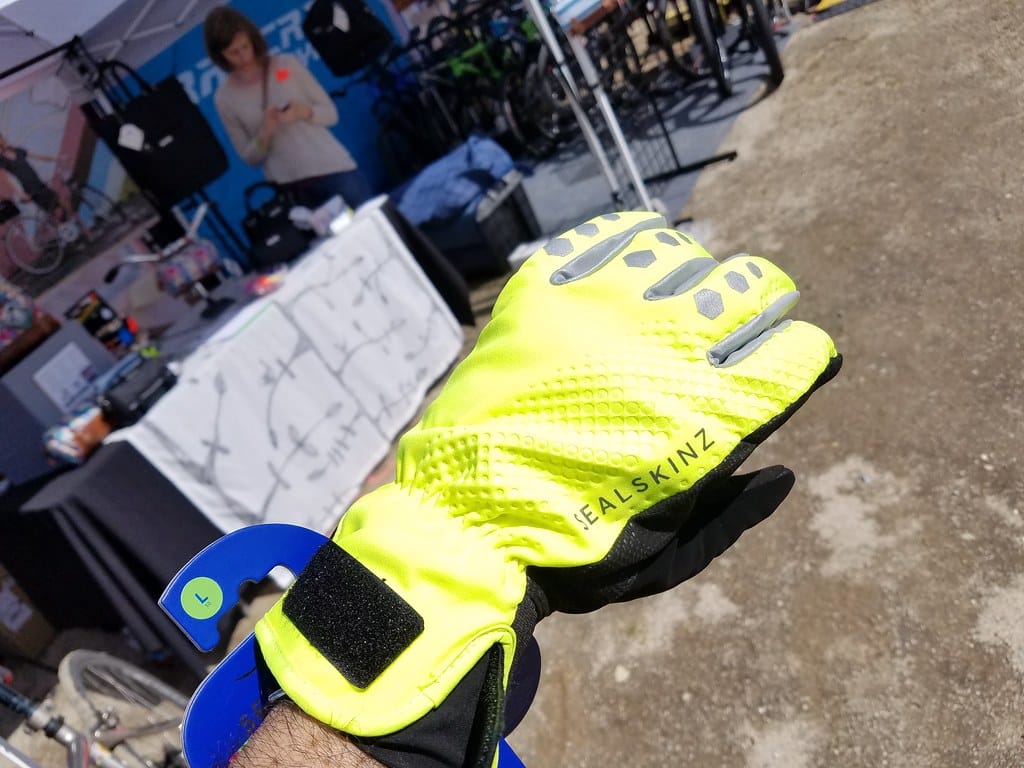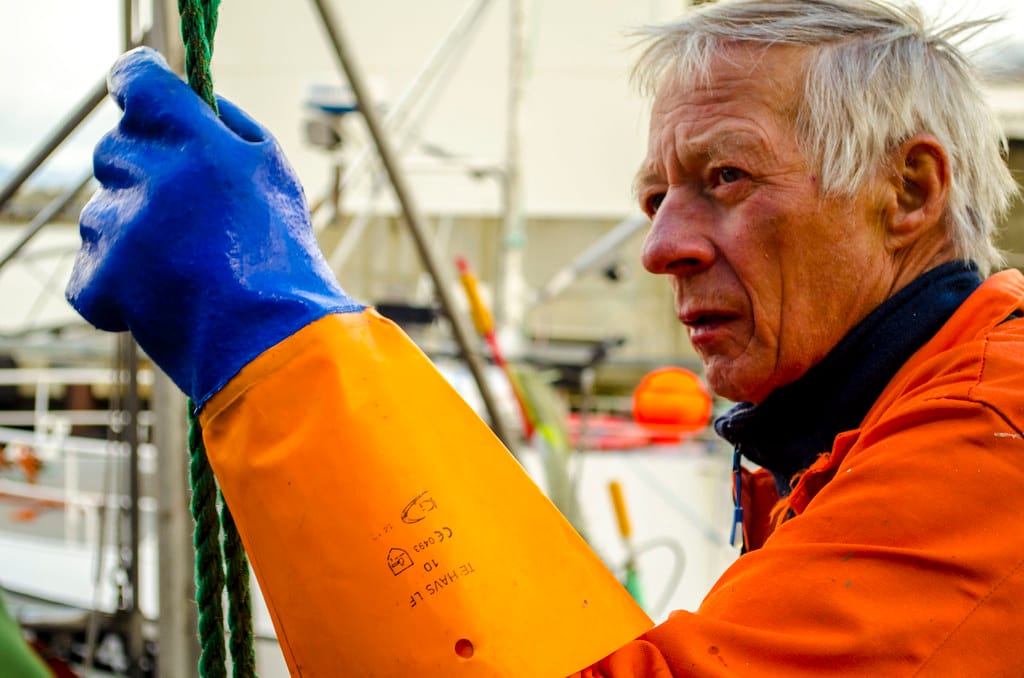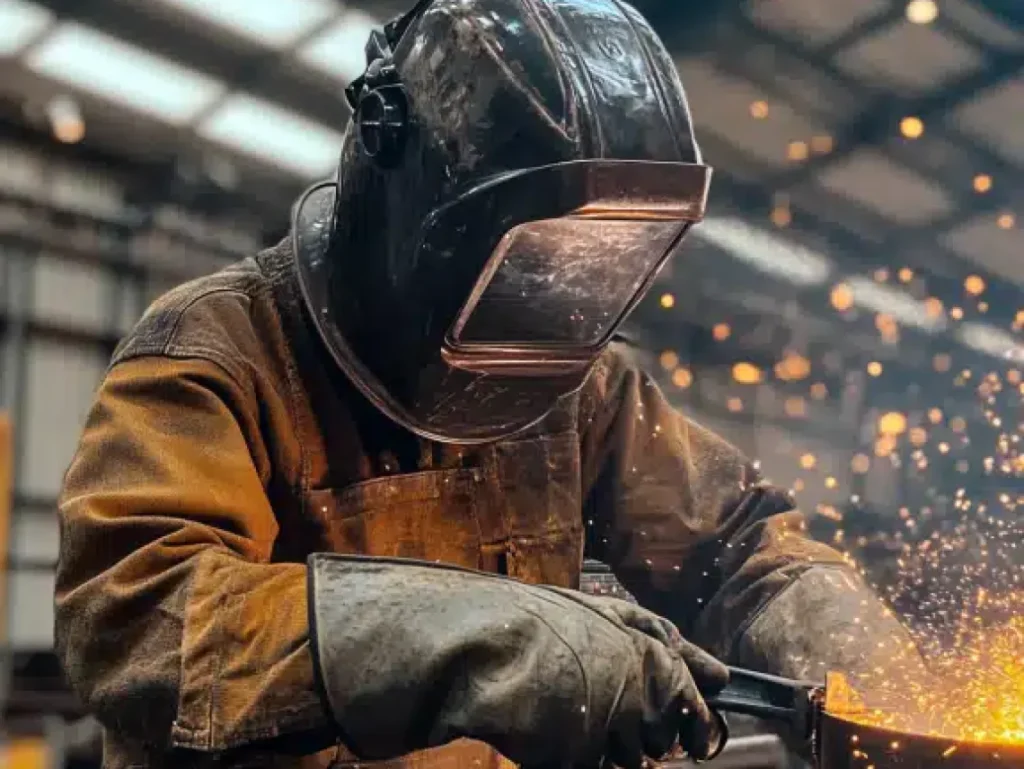
Hands perform the most tasks on any job site, yet they’re often the least visible. Think about it: workers signal cranes, guide vehicles, and operate tools—but if their gloves blend into the background, visibility drops to zero. This oversight has led to accidents, lawsuits, and costly delays in sectors like construction, transportation, and oil & gas.
This comprehensive 5500+ word guide covers everything buyers need to know about high-visibility gloves, including standards, real-world cases, material science, procurement strategies, and cost-benefit analysis. If you’re responsible for safety procurement, read on.
High-visibility gloves use fluorescent fabrics and retroreflective elements to make hands visible in low-light or high-risk environments. Standards like EN ISO 20471 (EU) and ANSI/ISEA 107 (US) guide color and reflective performance. For best results, choose gloves that combine hi-vis features with mechanical protection, grip, and secondary hazard resistance.
Why Hi-Vis Gloves Are Critical for Hand Safety
- 30% of “struck-by” accidents involve poor visibility of hand signals.
- In night operations, reflective clothing helps—but dark gloves create a blind spot.
- Regulatory frameworks emphasize visual signaling; hands are often the main communication tool in high-noise zones.
Extended Case Studies: When Gloves Fail, Accidents Happen
Case #1 – Road Construction, USA
A traffic flagger in low light used black thermal gloves with a reflective jacket. A truck operator misread hand signals, causing a collision with site equipment. Result: $45,000 in property damage and 2 injuries.
Solution: Hi-vis thermal gloves with reflective strips on the back.Case #2 – Airport Ramp, Germany
Ground crew member wore dark gloves during evening aircraft docking. Pilot couldn’t confirm stop gesture, delaying the operation by 12 minutes. Cost: €3,500 in turnaround delay fees.
Lesson: Airports now mandate ANSI-compliant hi-vis gloves with reflective fingertips for gesture clarity.Case #3 – Oil Refinery, UAE
A mechanic replacing valves inside a low-light processing unit used green work gloves with no reflective zones. His hand movement was missed during crane lifting, causing a pinch injury. Claim: $18,000 + lost man-hours.
Prevention: Hi-vis gloves with cut protection + reflective knuckle bands.Case #4 – Port Terminal, Singapore
Dock operator signaling crane operator wore low-contrast gloves. Crane failed to stop in time, crushing a 2-ton cargo pallet. Damage cost: $40,000.
Correct PPE: Hi-vis gloves meeting EN ISO 20471 principles, paired with hi-vis sleeves.Case #5 – Rail Maintenance, UK
At night, a worker coupling rail cars lost two fingers after the driver couldn’t see his hand. Lesson learned: Combine hi-vis gloves + ISO 7000-compliant gesture training.Case #6 – Snow Clearing, Canada
Crew clearing airport runways in whiteout conditions wore white or gray gloves. Several near-misses occurred because hands blended into the snowy background. Solution: Fluorescent orange gloves outperform lime in snow conditions.
Standards: EN ISO 20471 vs ANSI/ISEA 107 for Gloves
Although these standards were designed for clothing, their principles apply to gloves for signaling tasks:
| Standard | Core Requirement |
|---|---|
| EN ISO 20471 | Specifies colorimetric values (fluorescent yellow, orange-red) + retroreflectivity for low light |
| ANSI/ISEA 107-2020 | Defines minimum luminance, background material surface area, and reflective tape placement |
For Gloves:
- Fluorescent fabric: High daytime visibility
- Reflective tape: Retroreflective under headlights or artificial light
- Placement: Back of hand, knuckles, and cuffs for 360° visibility
Technical Specs for Hi-Vis Colors and Reflectivity
| Parameter | EN ISO 20471 | ANSI/ISEA 107 |
|---|---|---|
| Fluorescent Yellow | ≥ 0.4 luminance factor | Same + chromaticity compliance |
| Retroreflective Tape | ≥ 330 cd/lx/m² for new material | ≥ 330 cd/lx/m² minimum |
| After Abrasion | ≥ 100 cd/lx/m² post-wear | Same requirement |
✅ Buyer Insight: Check if reflective material meets abrasion resistance to withstand washing cycles.
Color Selection by Environment
| Work Environment | Best Fluorescent Color |
|---|---|
| Snowy or bright surfaces | Orange-red (contrasts white) |
| Green landscapes | Yellow-lime |
| Dusty desert or tan areas | High-contrast yellow |
Design & Material Innovations
| Component | Function |
|---|---|
| Fluorescent Base Fabric | Daylight visibility |
| Reflective Tape | Night visibility (positioned on knuckles & cuffs) |
| Grip Coating | Safe handling in wet/oily conditions |
| Touchscreen Tips | For digital tools without glove removal |
Advanced Feature: Thermal + Hi-Vis Combo → For winter road work, EN 511-rated gloves with reflective accents.
Industry Applications & Recommended Features
| Industry | Hazard | Glove Features |
|---|---|---|
| Road Construction | Vehicle signaling, low light | Hi-vis yellow/orange + reflective strips + abrasion resistance |
| Oil & Gas | Confined zones, pinch hazards | Hi-vis + cut protection + chemical-resistant coating |
| Airport Operations | Night marshalling | ANSI hi-vis gloves + thermal insulation |
| Rail & Port | Heavy lifting + signaling | Hi-vis + waterproof + grip-enhanced coating |
Common Procurement Mistakes
- Choosing bright gloves without certified reflective elements → Fails in night conditions.
- Prioritizing visibility over mechanical safety → Leads to laceration injuries.
- Ignoring abrasion durability of reflective tape → Reflectivity fades after 5 washes.
- Buying one-size gloves → Poor fit reduces worker compliance.
Cost Impact: Wrong vs Right Choice
| Scenario | Cost of Failure | Glove Investment | Savings |
|---|---|---|---|
| Accident from missed signal | $50,000 | $15 per pair | $49,985 |
| Operational delay at airport | €3,000 per incident | €20 per pair | €2,980 |
| Injury claim (pinch point) | $18,000 | $25 per glove | $17,975 |
Extended FAQ (12 Key Questions)
Q1: Are EN ISO 20471 and ANSI 107 mandatory for gloves?
A: No, but many industries adopt these principles voluntarily.
Q2: Do gloves need full reflective coverage?
A: No, strategic placement on knuckles and cuffs is sufficient.
Q3: Can hi-vis gloves replace reflective armbands?
A: They complement but do not replace full-body visibility PPE.
Q4: What’s the difference between fluorescent and reflective?
A: Fluorescent = visible in daylight; reflective = visible in artificial light.
Q5: Which color is best for snow environments?
A: Orange-red offers the highest contrast.
Q6: Do reflective gloves work in heavy rain?
A: Yes, if the tape is EN-certified and laminated, not printed.
Q7: How long does reflectivity last?
A: Typically 25 wash cycles; confirm with supplier.
Q8: Can I combine hi-vis with cut resistance?
A: Yes, choose composite gloves with Kevlar® liners.
Q9: Are hi-vis gloves heat-resistant?
A: Only if EN 407 is included; hi-vis does not imply thermal resistance.
Q10: How do I verify reflectivity performance?
A: Request photometric test data per EN or ANSI standards.
Q11: Should I use color coding by role?
A: Yes—common in airports and ports (e.g., orange for marshallers).
Q12: Do gloves expire?
A: Reflective elements degrade—check every 12 months.
Procurement Checklist
- [ ] Fluorescent color: EN/ANSI compliant
- [ ] Reflective zones: Knuckles + cuff areas
- [ ] Mechanical safety: EN 388 for cuts/abrasion
- [ ] Durability: Reflective tape withstands washing
- [ ] Multiple sizes for ergonomic compliance
ROI Analysis: Full PPE Integration
| Investment (100 workers) | Cost | Risk Reduction |
|---|---|---|
| Hi-Vis Jackets Only | $3,000 | 65% visibility coverage |
| Jackets + Hi-Vis Gloves | $4,500 | 95% coverage → zero missed signals |
Advanced Strategy: Combine Hi-Vis with Gesture Compliance
ISO 7000 pictograms for hand signals should be taught in training—hi-vis gloves increase accuracy of signal recognition by 35% in poor lighting.
Conclusion
Hi-vis gloves are no longer optional—they’re a core element of modern safety programs. Buyers must prioritize visibility, mechanical safety, durability, and compliance with EN ISO 20471 and ANSI principles for maximum worker protection.
📩 Need EN-compliant hi-vis gloves with dual protection (cut, cold, or chemical)?
Email: [email protected]
🌐 www.workwearsolutions.net
Zion Zhang
Recent Posts
 The Nigerian Agent Who Lost $50,000 on Fake Certificates — Then Came Back Stronger2025年10月20日Introduction In the global trade of PPE and industrial […]
The Nigerian Agent Who Lost $50,000 on Fake Certificates — Then Came Back Stronger2025年10月20日Introduction In the global trade of PPE and industrial […] How a Brazilian Trader Used $5,000 to Break into the PPE Market2025年10月20日Introduction In a world where industrial safety and […]
How a Brazilian Trader Used $5,000 to Break into the PPE Market2025年10月20日Introduction In a world where industrial safety and […] From First Order to Market Leader: A Ghana Distributor’s 3-Year Journey2025年10月20日In the fast-growing African PPE and workwear market, small […]
From First Order to Market Leader: A Ghana Distributor’s 3-Year Journey2025年10月20日In the fast-growing African PPE and workwear market, small […] Scaling Your Workwear Brand: From Local Agent to Regional Distributor2025年10月15日In the workwear and PPE industry, many businesses start […]
Scaling Your Workwear Brand: From Local Agent to Regional Distributor2025年10月15日In the workwear and PPE industry, many businesses start […] After-Sales Service & Customer Retention in the Workwear Business2025年10月15日In the global workwear and PPE industry, many suppliers […]
After-Sales Service & Customer Retention in the Workwear Business2025年10月15日In the global workwear and PPE industry, many suppliers […] Government & Corporate Contracts: Winning Large PPE & Workwear Deals2025年10月14日Government & Corporate Contracts: Winning Large PPE […]
Government & Corporate Contracts: Winning Large PPE & Workwear Deals2025年10月14日Government & Corporate Contracts: Winning Large PPE […]
CONTACT US
- Feel free to contact us any time. We will get back to you as soon as we can!
- +86-17330061805
